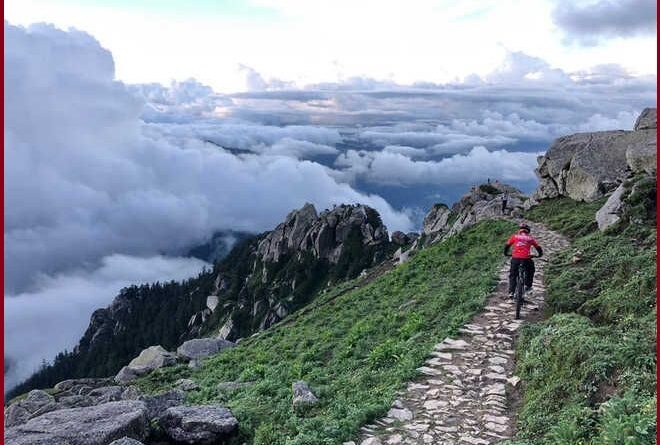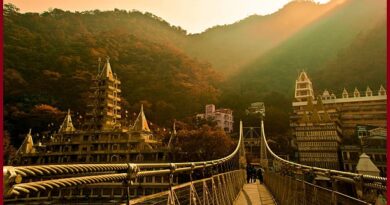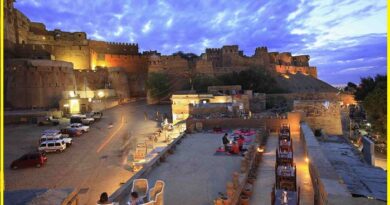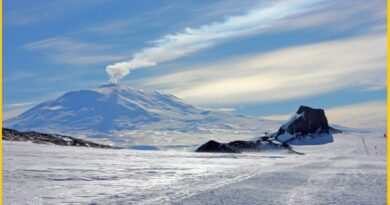High Altitude Adventure: Trekking the Churdhar Trail
Churdhar Trek
Churdhar trek weather
The weather on the Churdhar trek varies depending on the season. Here’s a general overview of the weather conditions you can expect during different times of the year-
Summer (April to June)
Summer is considered the best time for the Churdhar trek. The weather is pleasant, with mild temperatures during the day and cool nights. Daytime temperatures typically range from 15°C to 25°C at lower altitudes, but they can drop as you ascend higher. The skies are usually clear, offering excellent visibility and panoramic views of the surrounding Himalayan peaks. It’s important to carry sunscreen and stay hydrated as the sun can be strong at higher altitudes.
Monsoon (July to September)
The monsoon season brings heavy rainfall to the region, making trekking difficult and potentially dangerous. Landslides and slippery trails are common during this time, increasing the risk of accidents. Trekking is generally not recommended during the monsoon season due to safety concerns.
Autumn (October to November)
Autumn is another favorable time for the Churdhar trek. The weather is cool and dry, with clear skies and crisp air. Daytime temperatures start to decrease gradually, especially towards the end of November.The foliage begins to change colors, creating a picturesque landscape with hues of red, yellow, and orange.
Winter (December to March)
Winter brings cold temperatures and snowfall to the Churdhar region, making trekking challenging. Daytime temperatures can drop below freezing, and nights are extremely cold, with temperatures often dipping well below zero. The trekking trails may be covered in snow, requiring proper equipment such as crampons and trekking poles. Only experienced trekkers with appropriate gear should attempt the Churdhar trek during winter, and it’s essential to check weather forecasts and trail conditions before embarking on the journey.
Churdhar Trek Best time
Overall, the best time to undertake the Churdhar trek is during the summer and autumn seasons when the weather is favorable and the trails are relatively safer. It’s important to plan your trek accordingly and be prepared for changing weather conditions, especially in the Himalayan region.
Churdhar Trek Map
Map of hiking trails and routes up Churdhar Peak (3647 m) in the Himalayas of India

Snow Churdhar Trek
Trekking to Churdhar in the snow can be an exhilarating adventure, but it also requires careful planning and preparation due to the challenging conditions. Snowfall typically occurs in the Churdhar region from December to March. The best time for a snow trek depends on your preference for snow conditions and your level of experience in trekking in the snowy terrain.
Trekking in snow requires specialized gear and clothing. Ensure you have proper winter trekking boots with good grip, warm clothing layers, a waterproof jacket and pants, gloves, and a hat. Additionally, carry essential equipment such as trekking poles, a headlamp, sunglasses, and a first-aid kit. During the snow season, the trekking route may be covered in snow, making navigation challenging. It’s advisable to hire a local guide who is familiar with the trail and can safely lead you through the snow-covered terrain.
Snow trekking poses additional risks such as avalanches, slippery trails, and cold-related injuries. Always check the weather forecast and avalanche conditions before embarking on the trek. Stay alert for signs of avalanches, such as recent snow deposits and cracking sounds. Practice safe trekking techniques, including walking in a single file, avoiding steep slopes, and staying on the designated trail. Trekking to high altitudes in snowy conditions requires proper acclimatization to prevent altitude sickness. Take your time to ascend gradually, stay hydrated, and listen to your body for any signs of altitude-related discomfort.
Trekking to Churdhar in the snow offers a unique and breathtaking experience, but it’s essential to prioritize safety and be well-prepared for the challenges of trekking in winter conditions. With proper planning and precautions, you can enjoy a memorable snow trek to Churdhar and soak in the pristine beauty of the Himalayas blanketed in snow.
Churdhar Trek Distance From Chandigarh
Nohradhar to Churdhar Trek Distance
The trekking distance from Nohradhar to the summit of Churdhar is approximately 18 to 20 kilometers one way, depending on the specific trail taken and any deviations along the route. The trek usually starts from Nohradhar, a small village located in the Sirmaur district of Himachal Pradesh, India. From Nohradhar, trekkers ascend through dense forests, meadows, and steep ridges, passing by landmarks such as Bhim Talai (pond) and Chureshwar Mahadev Temple before reaching the summit of Churdhar.



